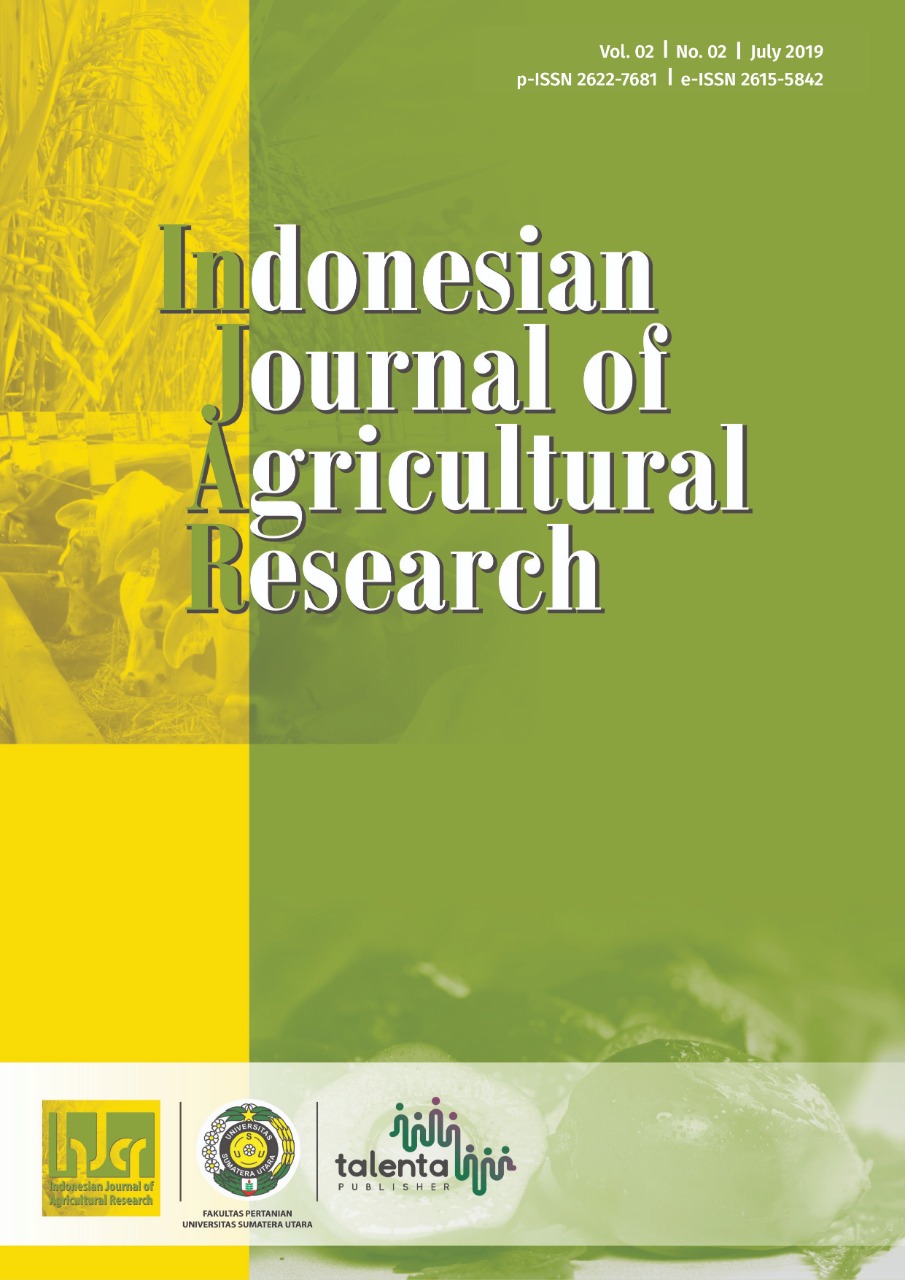The Effect of Moringa Leaf Flour Addition in Steamed Sponge Cake Made from a Mixture of Wheat and Banana Flours
DOI:
https://doi.org/10.32734/injar.v2i2.1144Keywords:
banana flour, moringa leaf flour, steamed sponge cakeAbstract
The aim of this study was to determine the suitable Moringa oleifera leaf added for steamed sponge production, which was made from the mixture of wheat and banana flours. This research was conducted. This research was conducted by using completely randomized design with 2-factors, namely percentage of moringa leaf flour (K): (0,0% ; 1,0% ; 2,0%) and comparison of mixture wheat flour and banana flour (P): (100%:0% ; 75%:25% ; 50%:50% ; 25%:75%). The results showed that the addition of more moringa leaf flour increased the ash, protein and crude fiber contents in the composite flours. The increment might be related to higher ash, protein and fiber contents in moringa leaf flour than that of in both wheat flour and banana flour. In addition, higher banana flour substitution raised the moisture and ash contents. Meanwhile, the specific volume of cake decreased because banana flour does not have gluten. Based on the protein content and organoleptic values, the addition of 2% moringa leaf flour and the ratio of wheat flour to banana flour (75%:25%) produced the best quality of steamed sponge cake.
Downloads
References
W. C. Yameogo, D. M. Bengaly, and S. A. Traore, “Determination of chemical composition and nutritional values of moringa oleifera leaves,†Pakistan Journal of Nutrition, vol. 10, no. 3, pp. 264-268, 2011.
B. Mandieta-Araica, E. Sporndly, N. Reyes-sanchez, Salmeron-Miranda, and M. F. Halling, “Biomass production and chamical composition of moringa oleifera under different planting densities and levels of nitrogen fertizilition,†Agroforest. Sist, vol. 8, no. 7, pp. 81-92, 2013.
A. C. Mehta, U. B. Prakash, R. Garland, E. Haponik, L. Moses, W. Schaffner, and G. Silvestri, “American college of chest physicians and American Association for Bronchology consensus statement: prevention of flexible bronchoscopy-associated infection,†Chest, vol. 128, no. 3, pp. 1742-1755, 2005.
G. P. Singh, R. G. Sudeep, and S. Kumar, “Anti-inflammatory evaluation of leaf extract of moringa oleifera,†Journal of Pharmaeutical and Scientific Innovation, vol. 1, no. 1, pp. 22-24, 2012.
V. S. Srikanth, S. Mangala, and G. Subrahmanyam, “Improvement of protein energy malnutrition by nutritional intervention with moringa oleifera among anganwadi children in rural area in Bangalore, India,†International Journal of Scientific Study, vol. 2, no. 1, pp. 32-35, 2014.
F. Umi, “Pengaruh campuran bekatul pada produk cookies terhadap sifat fisik, organoleptik, dan kadar serat,†Jurnal Nutrisia, vol. 15, no. 1, pp. 48-52, 2012.
Ismarani, “Potensi senyawa tanin dalam menunjang produksi ramah lingkungan,†Jurnal Agribisnis dan Pengembangan Wilayah, vol. 3, no. 2, pp. 46-55, 2012.
Downloads
Published
How to Cite
Issue
Section
License
Copyright (c) 2019 Indonesian Journal of Agricultural Research

This work is licensed under a Creative Commons Attribution-ShareAlike 4.0 International License.



















